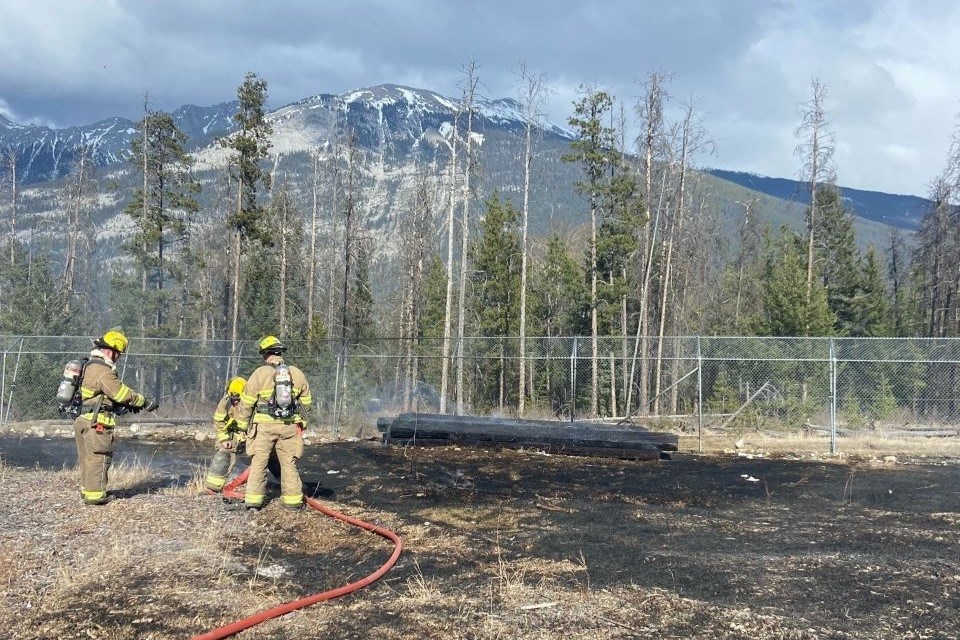Burning clean, woody debris is the standard practice at the transfer station that is managed by Parks Canada.
That practice is set for a review after responders dealt with a fire that was reported late last Monday afternoon [April 15] at the site located approximately nine kilometres northeast of Jasper. The fire reportedly began a few days after Parks ignited a burn in a protected earthen berm cell on Friday.
“We've never had a problem like this,” said Dave Argument, resource conservation manager with Jasper National Park.
The berm cells are well-protected, Argument said, with three raised sides with one open. At this time of the year, the collection of wood debris frequently grows from what is brought in by residents, contractors and anyone else who wants to keep it out of the landfills.
“Burning some of that material is still, unfortunately, the best way to dispose of it,” he said.
“There's a bit of an irony here, of course, that because of all the fire risk reduction work, there's a higher volume than normal of material to be disposed of. Everybody's trying to do their parts to make sure that we're reducing fire risk to the community and things like that.”
Before each burn, the transfer station operator confirms with the fire management officer that the time and conditions warrant ignition. If the fire management officer gives the go-ahead, the burn pile is ignited, and the cell is closed off while it burns down.
It isn’t supervised 100 per cent of the time, Argument said, but the transfer station operator is normally there during the day.
With the wind that whipped up earlier that day, embers flew off the pile and landed in combustible dry grass, sparking the blaze.
Parks Canada’s fire crew first responded around 4:15 p.m. As the fire progressed, it moved into an area containing other waste materials including plastics and creosote-soaked timbers. It came close to the scrap metal pile as well, but there are bits of waste material pieces of plastic and Styrofoam that frequently get stuck in the grass.
Parks then requested the assistance of the Municipal Fire Department, which has trained personnel who come equipped with breathing apparatuses that allow them to work on non-wood fires.
“They were able to come out and address a couple of spots where the fire starting to impact the waste material at the transfer station that might be more toxic smoke than what we’re trained to do,” Argument said.
The fire was brought under control within a few hours, only reaching 0.8 hectares in size. Fire crews created a fire guard line along the fence there to ensure that no other encroachment happens. By Friday, Argument couldn’t say that it was extinguished but that it was very secure at this point. He had no further concerns about the fire growing back.
The only concerns relate to how it occurred and making sure it doesn’t happen again. Argument said that the obvious next step is to make sure to fill up the holes in the process.
“We'll have to have a look at the process and make sure that we make some improvements where we can find them.”
Argument explained that the fire risk in Jasper National Park at the time was low. There is, however, a bit of a window where the snow is gone but it’s still before green-up when the dry vegetation becomes a concerning factor. The fire is still under investigation.
He added that the incident does serve as a strong reminder that everyone must be aware of the hazards and play their part in preventing wildfires.


